We live in times rapidly shaped by a variety of shifting forces. The scope of technologies like artificial intelligence (AI), Internet of Things (IoT), advanced robotics, genome sequencing, energy storage and the like are accelerating at rapid pace. The global economy is undergoing its largest technological transformation in the history of humankind with multiple innovation platforms evolving and multiplying all at the same time.
The technological disruptions have broad implications for organizations, businesses, individuals, nation-states and societies. How are we going to be impacted by these? Are there any frameworks to think about the changes and make decisions? Or are we just going to be lost in the storm of disruptive innovations and modern buzzwords?
For these questions, The Nagaoka Review reached out to Artis Birzins (AB), Director of Data & AI Delivery Management at Avanade and Visiting Lecturer at the Nagaoka University of Technology where he teaches a course called “Think Like a Futurist.” Interestingly enough, he is also a scion of an author for a best-selling book “When Better Times Will Come?” (“Kad nāks labāki laiki?” in Latvian) published in 1933.
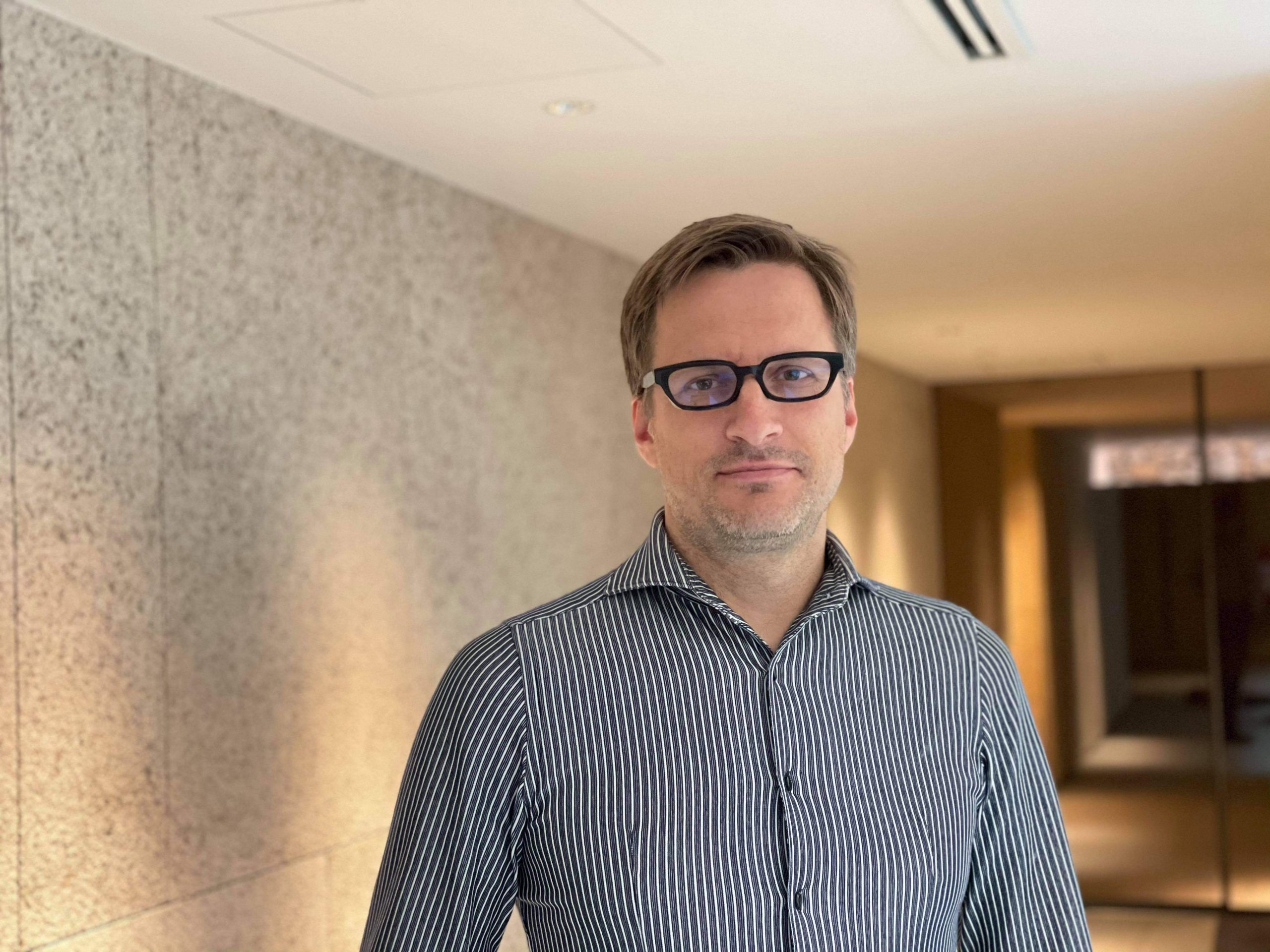
Artis Birzins, Director of Data & AI Delivery Management at Avanade and Visiting Lecturer at the Nagaoka University of Technology
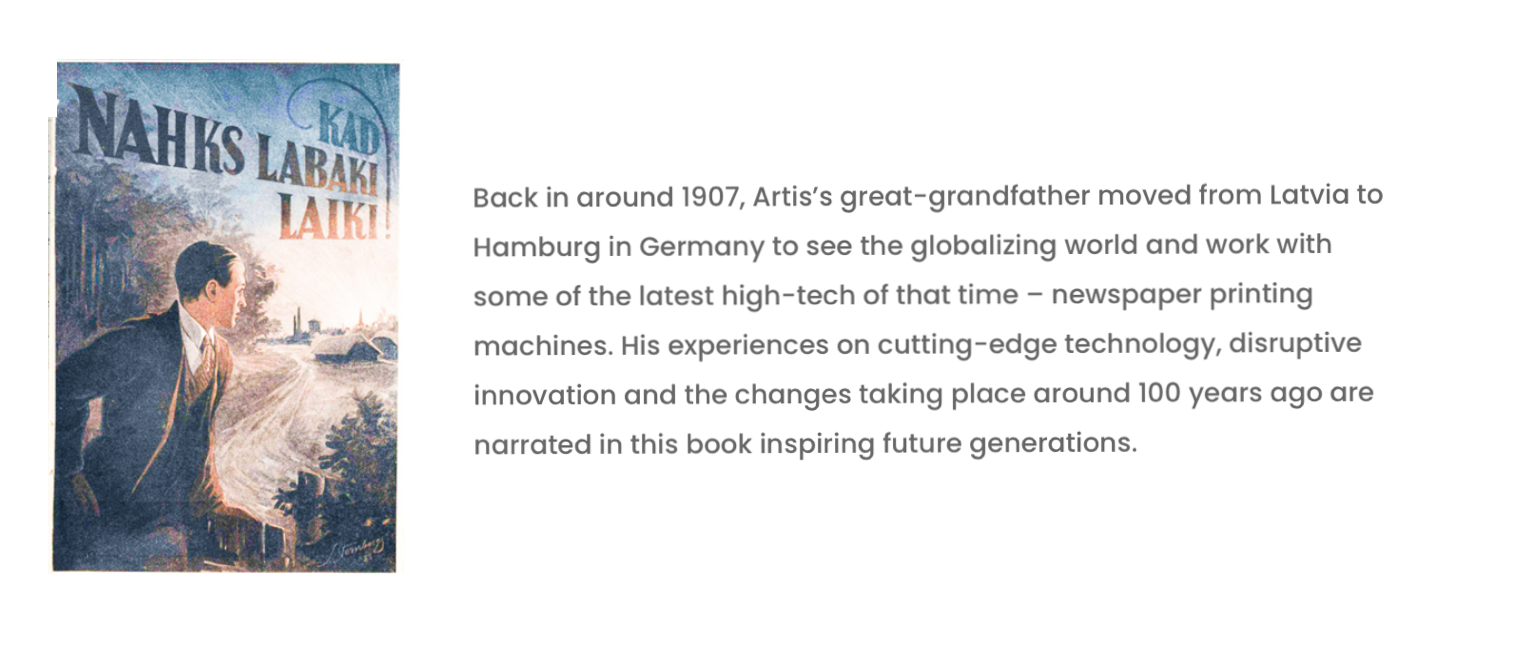
General Purpose Technologies
NR: To begin, can you give us an idea of what are general purpose technologies?
AB: General-purpose technologies are technologies that drastically change societies through their impact on the economic and social structures. For example, the electricity was invented in the 18th century, has affected every industry and almost every society since then. Currently, AI and multiple other technologies are considered to be of a similar scale to form the 4th Industrial Revolution and future human civilization.
You have exponentially accelerating impact of new technologies. For example, the electric vehicles. As batteries become cheaper and more usable, they lead to exponential growth in related technologies and consumption to replace fuel while changing whole legacy industries and supply structures forever.
Going back many thousands of years ago, the acquisition and mastering of fire, was also a sort of disruptive technology and changed the humankind forever.
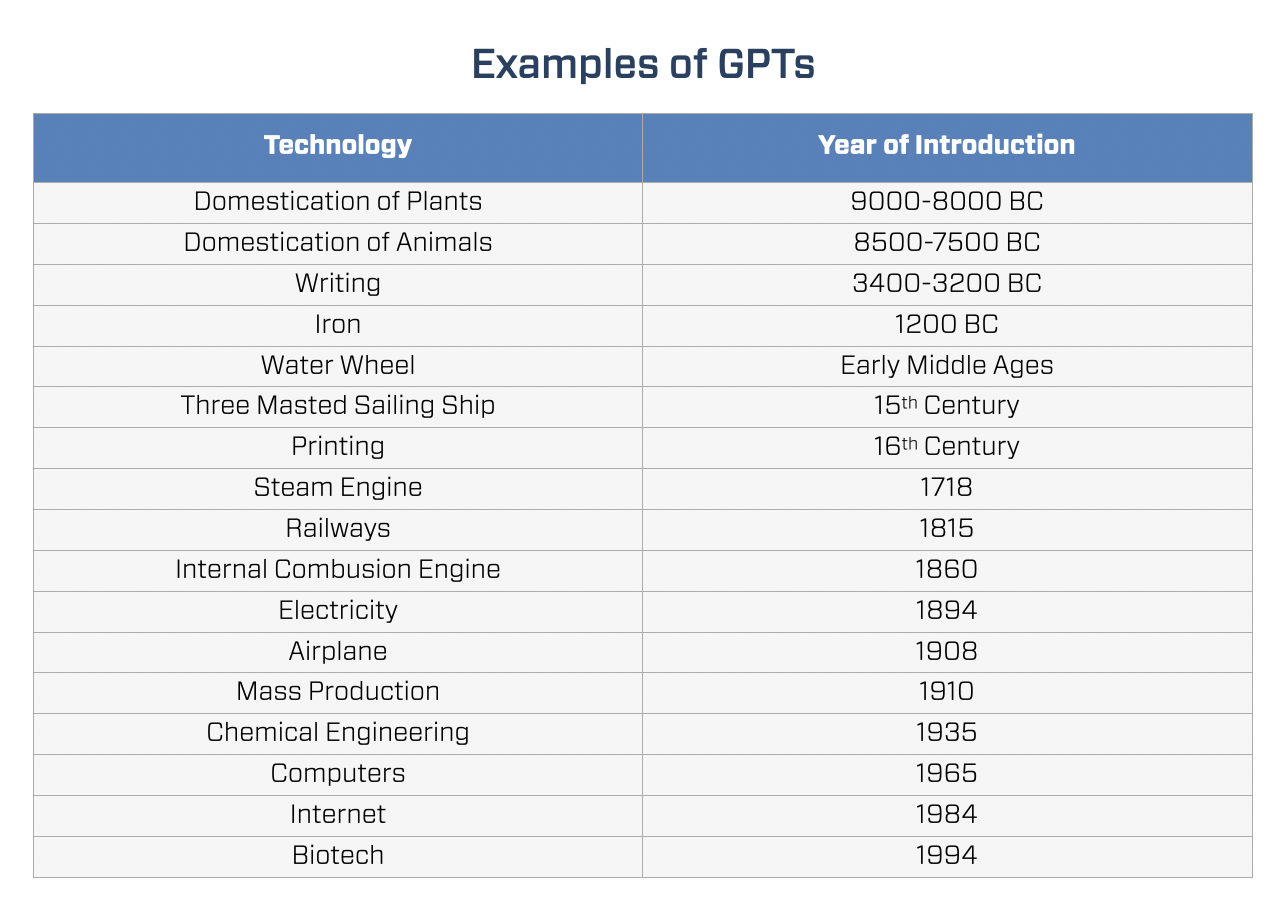
Examples of General Purpose Technologies. Image Source: Artis Birzins
Throughout the human history, you can see examples of general purpose technologies appearing periodically and changing us again and again. Think of the domestication of plants. It changed the social structures of humans considerably because people started farming, build different communities and it has changed the culture forever. So did the domestication of animals and the introduction of writing for storing knowledge and information via recods.
But what’s different now though, compared to the past, is that the frequency of these disruptive innovation technologies is much higher, increasingly happening at the same time and converging.
Example Illustration of Increased Frequency of new General Purpose Technologies on Timeline
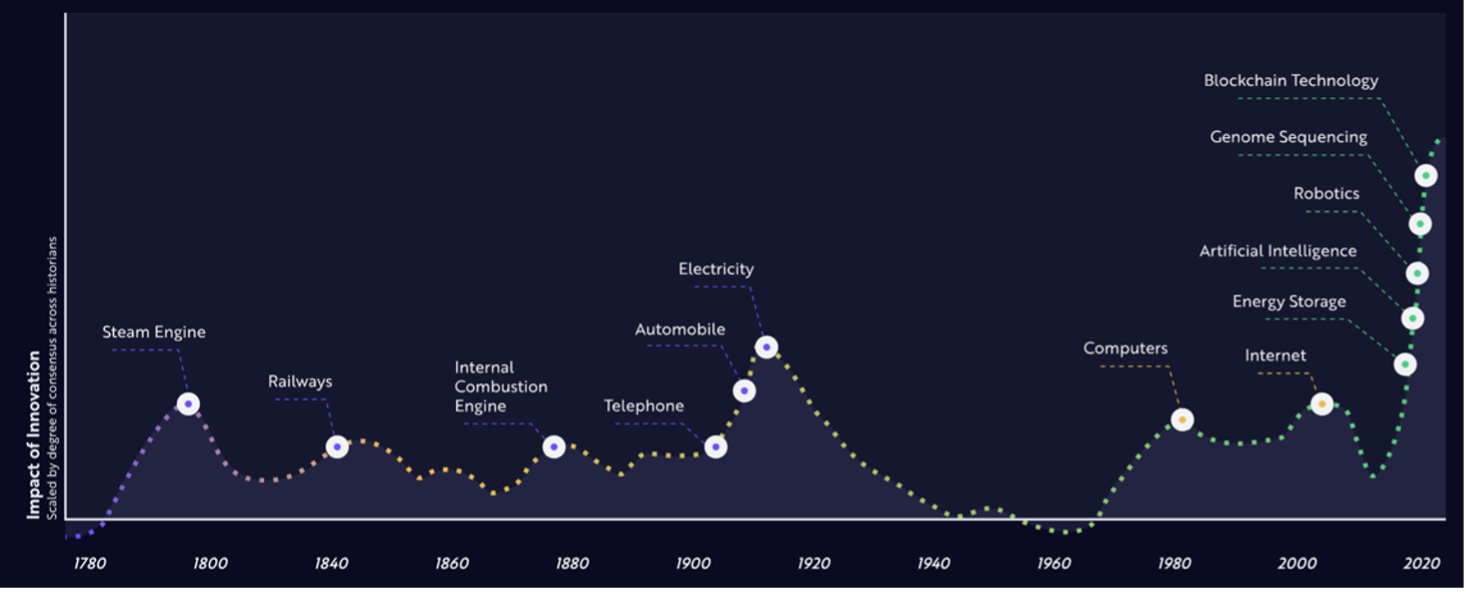
Relative impact of an innovation scaled by the degree of consensus between economic historians. The underlying data assumes that all innovation platforms follow a characteristic investment and realization cycle of similar duration. Source: ARK Investment Management LLC, 2019.
”We have just recently got computers, Internet, AI and much more. You can see how close the appearance of these general purpose technologies are to each other in terms of historical timeline. As time goes on, it looks more and more congested. And that’s exactly what's changed from the historical perspective. In the past, you had technologies coming into play maybe once a thousand, hundred or 50 years, but there's an exponential growth in those general-purpose technologies coming into our lives right now and at the same time.
Artis BirzinsDirector of Data & AI Delivery Management at Avanade and Visiting Lecturer at the Nagaoka University of Technology
Fourth Industrial Revolution
NR: What makes the 4th Industrial Revolution different?
AB: To understand the future, it is good to understand how things have evolved. If we put things on a timeline again, a very well-known classification of the periods of our civilization has been the industrial eras. The first one is often characterized by mechanization and this is probably why the global language that we are speaking in this interview is English.
The British developed steam engine starting the first industrial revolution and this increased the rate of productivity so much far ahead of others including the big powers like China and India at that time.
And Britain became the world’s superpower of that time conquering large parts of the world. So, I would say we speak English now because somebody invented steam engine in England in that century that allowed history evolve in this way. And historically, many governments want to get the latest technology so that they can be the next superpower. So that’s one way to look at it.
The Second Industrial Revolution, characterized by electrification, was another leap for humanity. The US adopted this very rapidly along with railroads, telegraphs, telephone, mass production of steel, petroleum, and the likes. It was again a huge boost for the society as these technologies increased productivity considerably while setting Britain in comparative decline.
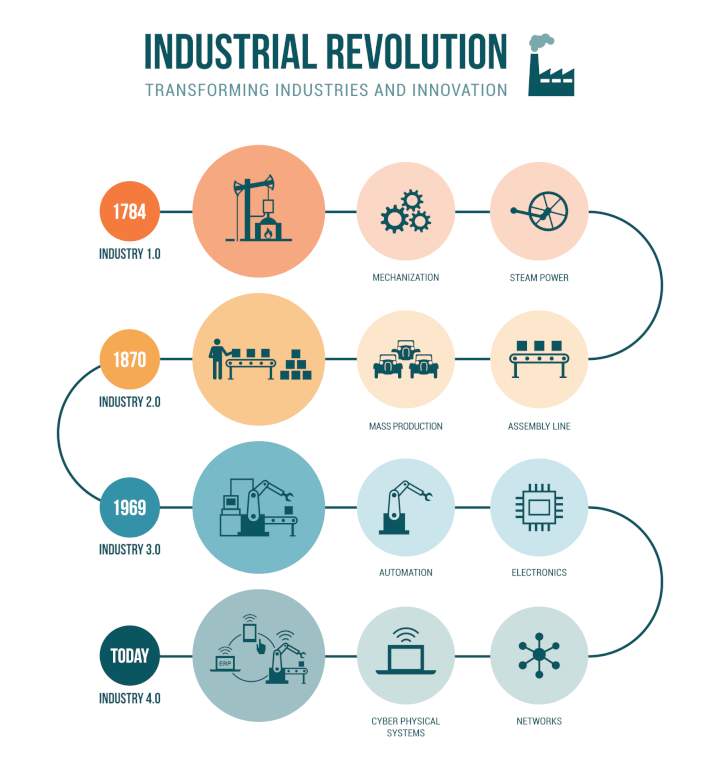
The Four Industrial Revolutions. Image Source: Visual.ly
Then, the Third Industrial Revolution characterized by automation, computers and software, automobiles.
Now we see the Fourth Industrial Revolution taking place. Today’s global societies are experiencing large-scale machine-to-machine communication, billions of connected devices, unprecedented computing power and storage capacities. Thanks to AI, IoT, robots, cloud computing, biotech, quantum computing etc. – the long-term impact of such rapid developments remain to be seen.
Back in the days, we were quite unconnected from one another but in the past 20-30 years, our access to information, data, innovation has become broadly available and easily accessible.
And the biggest takeaway here is being aware of what’s happening and what’s coming in and what exponential growth and impacted times we are living in. So I think, it’s important for us to understand what changes are being and will be caused by these disruptive innovations and the logic behind them. I think, understanding general purpose technologies and disruptive innovation process may greatly help people to make many valuable decisions in life – from what career and education choices to pursue and where to invest savings to what school to send your kids to.
Exponential Speed of Adoption
NR: What makes it possible for commercialized technologies to get adopted by consumers faster these days?
AB: The telephone took 75 years to reach 100 million users but today, it is no longer uncommon to hear mobile applications achieving this number in few days.
If you are a startup and you have a good idea and you want to build a cutting-edge technology product – you may need a large computing power. 10 years ago, only big corporations had access to this capability in their in-house data centers. But today, with just a credit card, you can have the needed hours of computing to finish your job, and it’s very affordable. It’s not millions or billions of dollars anymore to have that kind of power at your fingertips.
It’s all about productivity. The more humans try, deploy and use a new technology product, the more cost-effective it becomes via continuous improvement cycles. So, for example, in electric cars, 5-10 years ago, experts looked at data and said the batteries are not good enough and it’s never going to beat fuel technology. But now, as more and more companies are investing in that technology, they try it out and as they go, it actually becomes cheaper and at some point, starting to beat the incumbent technology.
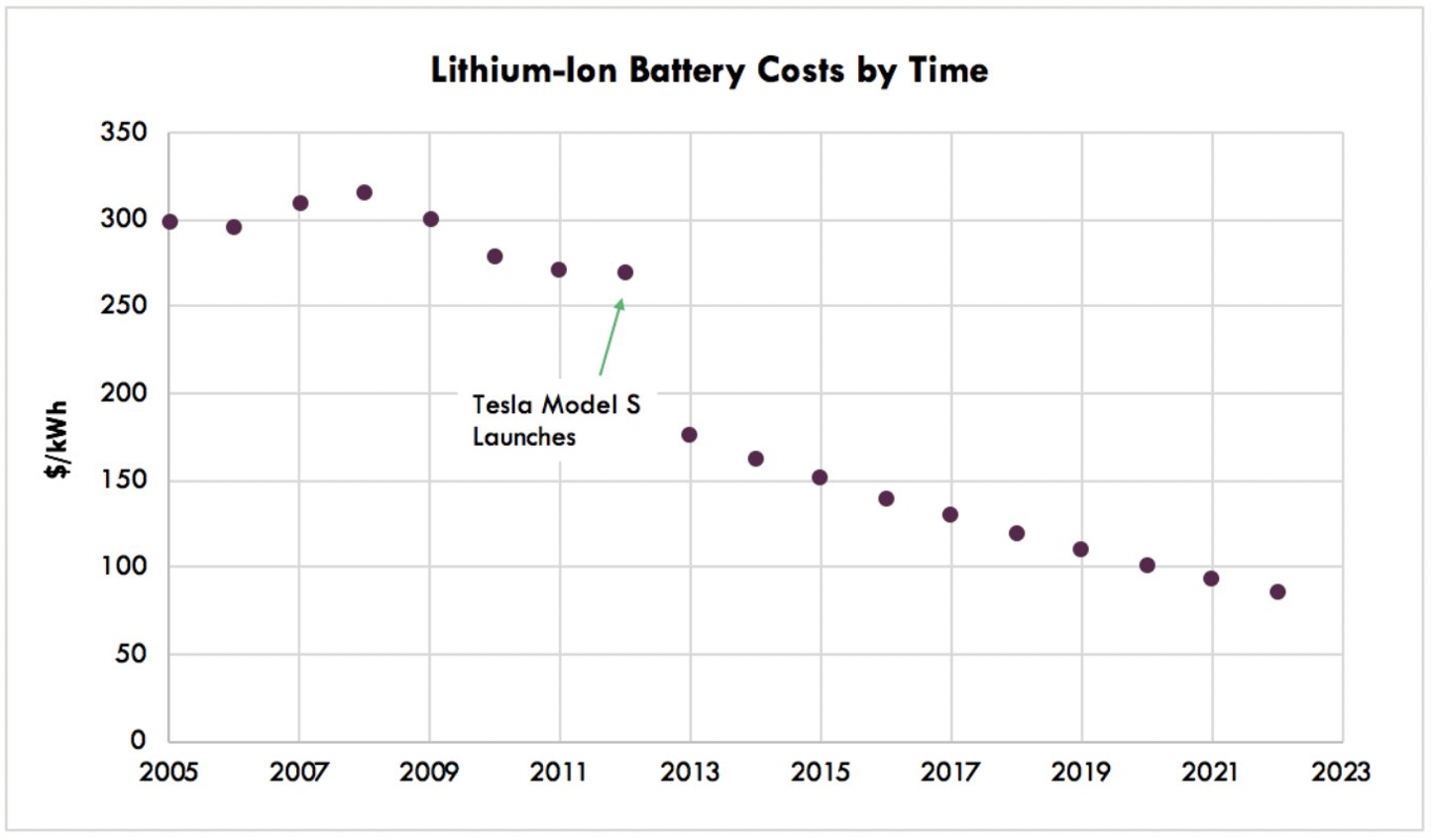
Source: ARK Investment Management LLC, 2018; IEA, Bloomberg New Energy Finance, Avicenna Energy
This principle is described in Wright’s Law, named after Theodore Wright, an American aeronautical engineer who found out that producing airplanes actually becomes cheaper with every next unit you make. Simply put, doubling the production leads to a 20% reduction in cost.
General-purpose technologies have a lifecycle. The first is investment where someone is playing around with the technology on a kind of experimental mode without real productivity gains. Next is realization stage, where someone managed to prove that there is a value in using the technology that is being developed. Later on proliferation and consolidation may happen.
”The changes are so profound that, from the perspective of human history, there has never been a time of greater promise or potential peril.
Klaus SchwabFounder and Executive Chairman, World Economic Forum
Quantum Computing and Quantum Supremacy
NR: Which of these general-purpose technologies are gaining widespread attention today?
AB: It is hard to predict the future and point out only one thing. That is why in futurism there is a lot of talk about future possibilities, stories and scenarios instead of making bets on one technology or even predicting stock prices. At NUT “Think Like a Futurist”, we examine and discuss about many disruptive technologies and their implications. One such technology that is gaining increasing attention from governments, investors, corporations, and researchers is quantum computing.
In the next 10 years, it is predicted that it will become a multi-billion-dollar industry. Companies such as IBM, Google, and Amazon are investing heavily in to build their capabilities in the area. Quantum computing is so much more powerful than traditional computing. Quantum computing is like finding your way throughout a labyrinth. But instead of trying each alternative path one by one, you may find the solution by examining all possibilities at once. Quantum computing is like solving that maze with guaranteed accuracy at the fastest time, quantum computing will be able to compute all possibilities of the labyrinth in parallel rather than attempting each route like one by one.
Predicted for decades, quantum computing is the moment when quantum computers can outperform the most powerful computer on Earth. Right now, that title belongs to Summit, a supercomputer that fills around 520 sqm about the same size of a football field. Summit is made by IBM and NVIDIA and consists of 185 miles of cables and 36,000 processors that can perform 200 quadrillion calculations per second. In contrast, Google’s Quantum which is the size of a fridge is said to be able to solve the same problems much faster. In October 2019, Google claimed that their processor was able to perform a calculation in 3 minutes and 20 seconds that would take today’s Summit approximately 10,000 years.
What makes this area interesting are possible practical applications related to solving optimization problems such as sorting through vast potential solutions to arrive at the best decision in logistics, drug discovery, and cybersecurity. Another very important use case of quantum computing is its application in nuclear fusion energy where quantum computing can be used in conjunction with AI to control plasma reaction with the reactor.
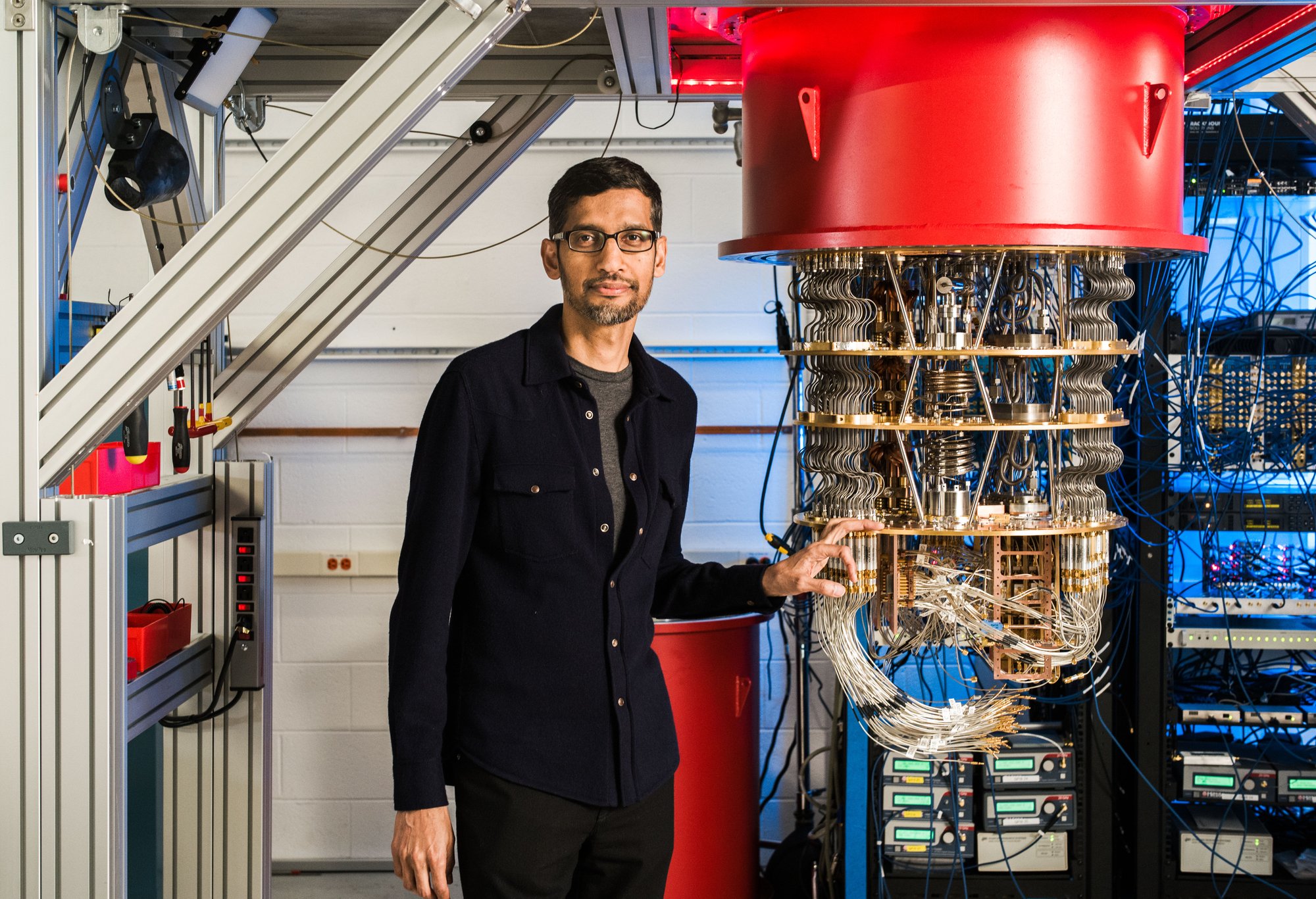
Google CEO Sundar Pichai next to a quantum computer at Google. Image Source: Google
Disrupting Incumbents
NR: How do traditional players get impacted by disruptive innovation?
AB: You might have noticed changes in media, advertising, retail, fintech, taxi, and online education. It’s a completely different picture now compared to 20 years ago. To give you an example, a company called Digital Equipment Corporation was a major force in the world of computing from the 1960s to 1990s. The company could not envision the growth in processing powers and reductions in sizes of computer components which would later replace their product lines. In 1998, Digital Equipment Corp. was acquired by Compaq Computer Corp. for $9.6 billion.
Digital Equipment Corporation is an example of an incumbent so focused on their existing customers thereby missing all the opportunities. Market newcomers work to win less profitable segments and over time appeal to wider audiences. By improving that area, a disruptor moves up to more profitable segments. Technology itself does not disrupt but it provides strategic choices for both technology vendor and customer.
On the Future of Jobs
NR: How do you see all of these impacting the talent that will be needed in the future?
AB: When it comes to the future of jobs, a report from the World Economic Forum, highlights that many employers in various countries across industries will be looking for talents specializing in AI, data science, and machine learning. Whether these survey answers surfaced by the executives were made just to look good and modern or represent a real strategy remains to be seen, but these trends are good to note.
Cloud computing and big data should also be up there as AI is enabled by these underlying technologies. AI without data doesn’t really work. So you need lots of data to build algorithms for machine learning to work.
Companies are investing in data science platforms and want to move forward but they cannot find enough people who understand these technologies and make an impact.
To train the future workforce to think about the broad implications that these general-purpose technologies would bring, Artis most recently started to teach a course called “Think Like a Futurist” at the Nagaoka University of Technology (NUT).
I want to prepare students for their professional lives in a fast-changing business environment effected by these disruptive technological innovations, be it in a large company or a startup. I want my students to keep an eye on major expanding technologies such as robotics, DNA sequencing, blockchain, and Artificial Intelligence as these have cross-sector ramifications and high future impact.
Career-wise, a good timeline to think about the future is 10 years because it is near enough to see it, prepare for it or even change it via your, career and impact in corporate environment, research, startups or government.
When asked about his experience in taking the course at NUT, Guillermo Guangorena, a student from Mexico shares:
”The whole experience was very interesting. It helped me to train my mind to look at the technology we are developing and how can we mix them with our areas of expertise. We analyzed the future of work and looked at AI from a general approach. It was really handy for the present and relevant for the future as we are able to spot areas of opportunity.
Guillermo GuangorenaMedical Doctor, Ph.D student at the Nagaoka University of Technology
Guillermo, a doctor by profession, has adopted the use of an AI chatbot during Artis’s course to manage COVID-related inquiries that he has been receiving. The bot is designed to respond to general inquiries and escalate concerns that require immediate attention and response. Furthermore, it produces data to be analyzed in further research.
A hundred years later, the journey that Artis’s great-grandfather took to explore disruptive innovation, may have taken a different narrator, but definitely continues.










